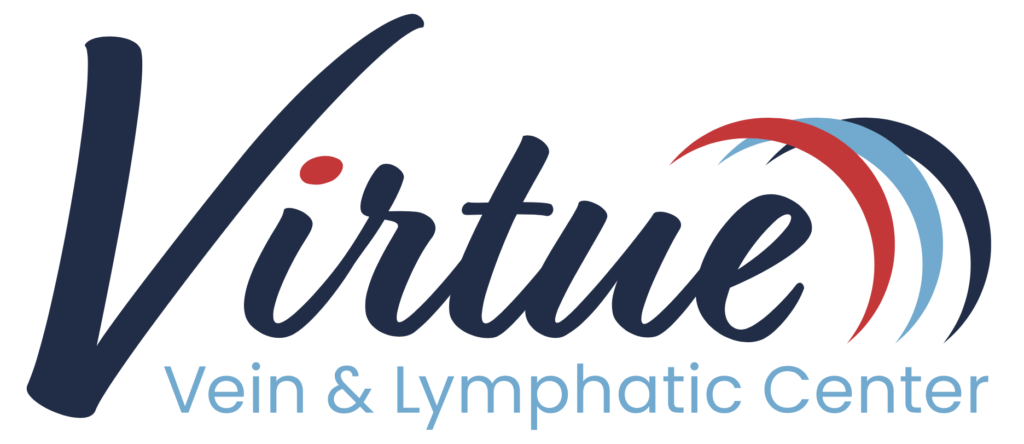Pelvic Congestion Syndrome Treatment in St. Louis, MO
Chronic Pelvic Pain, Especially After Childbirth
What is Pelvic Congestion Syndrome?
This condition is thought to be caused by varicose veins in the ovaries, uterus, or other pelvic area. It causes lower-back or lower-abdominal pain, sometimes only on one side, and pain during or after intercourse. It may start after a first pregnancy and worsen with subsequent pregnancies.
The condition often goes undetected during a pelvic exam because the affected veins tend to deflate when lying down. We can use a venous ultrasound to find varicose veins hidden anywhere in the body, and we’re able to quickly determine if this is the cause of pain.
Symptoms of Pelvic Congestion Syndrome
Lower back or abdominal pain:
- During your period
- After sex
- During pregnancy
- When tired or standing up
- Chronic pelvic pain
- Heaviness or fullness in the pelvic area
Some women also experience:
- Varicose veins on vulva or buttocks
- Irritable bladder and bowels
- Abnormally heavy periods
- Pain during or after intercourse
- Varicose veins in the thighs or buttocks
Advanced Treatment Options
Accurate diagnosis is crucial for effective treatment. At Virtue Vein & Lymphatic Center, we use advanced venous ultrasound technology to detect abnormal blood flow and varicose veins in the pelvic area. Our skilled technicians and specialists ensure a thorough and precise diagnosis, laying the foundation for a successful treatment plan.
Fortunately, this painful condition is easily treated with an advanced, minimally-invasive procedure. We use a venous ultrasound to locate the affected vein and place a stent inside it to keep it open, allowing normal blood flow. Up to 95% of women we’ve treated with a stent have found relief from their pain. Most are able to return to work and normal activities one week after the procedure.
Why Choose Virtue Vein & Lymphatic Center?
EXPERTISE:
Our team of specialists has extensive experience in treating vascular conditions, ensuring you receive the best care possible.
CUTTING-EDGE TECHNOLOGY:
We utilize the latest in venous ultrasound technology for accurate diagnosis and effective treatment.
PATIENT-CENTERED CARE:
We prioritize your comfort and well-being, providing compassionate care tailored to your unique needs.
CONVENIENT LOCATION:
Our center is conveniently located in St. Louis, MO, making it easy for you to access our services.

Let’s Find the Cause of Your Pelvic Pain, so You Can Enjoy Life Again
If your pain has gone undiagnosed or dismissed, come see us. With our specialized technology, we may be able to find the cause, and bring you relief.
At Virtue Vein & Lymphatic Center, we specialize in the diagnosis and treatment of Pelvic Congestion Syndrome (PCS), providing compassionate and effective care for women in the St. Louis, MO area. Our state-of-the-art venous ultrasound technology ensures accurate diagnosis and personalized treatment plans to help you regain your quality of life.
Schedule Your Consultation
If you are experiencing symptoms of Pelvic Congestion Syndrome, don't wait to seek help. Contact Virtue Vein & Lymphatic Center today to schedule your consultation. Our team is here to help you find relief and improve your quality of life.
We’re highly specialized, with seven treatment locations in the St. Louis area, we’re able to schedule your exam and treatment much sooner than other facilities. Call us at 314-956-1818 or complete this contact form to get started.
Schedule a Consultation
What To Expect
Consultation
When you arrive, you’ll complete a new patient form, which will ask you to list all your current medications. Wear or bring a pair of loose-fitting shorts for the exam, or we can provide a pair. Then we’ll take your vital signs, and may do an ultrasound. Dr. Krikorian will discuss your symptoms in depth and explain what treatment options are available.
Procedures
We may recommend ovarian or hypogastric vein embolization, which is injecting a medication into the affected vein to close it off. Learn more about ovarian or hypogastric vein embolization.
Recovery
Depending on the procedure, you may need to take a blood thinner for a short period of time. There are minimal restrictions after our procedures, and we encourage movement, including walking. You can expect 4-6 weeks of recovery before you receive the full benefits of the procedure.

"No More Pain"
MaryAnn R.
My daughter could not believe how good my legs looked! She is going to see Dr. Krikorian too. I was completely satisfied with my treatment and am no longer in pain. The result is fantastic and I highly recommend going to see Dr. Krikorian if you are experiencing any leg pain.

"I Walked 2 Miles the Next Day!"
Shirley M.
I had suffered with varicose veins for years. I recently went to see Dr. Krikorian at Virtue Vein & Lymphatic Center where he told me everything I needed to know about vein disease and the treatment options. He performed a laser ablation on my diseased vein, and I was able to resume my normal activity the day after my procedure!

"They Listen Very Well!"
Jeff K.
Dr. Krikorian is a busy man, but he will take the time necessary to really listen to you and figure out what the problem is. Most doctors these days seem to be talking to the computer, and not the person. Well, here it is the other way around.

"Very Knowledgable!"
Happy Patient
After my stress test was normal, Dr. Krikorian explained that the test was around 70% accurate and that I should pay close attention to my body for any warning signs. A few weeks later I was exercising when my energy was zapped in less than 10 minutes and I had a pain under the sternum. I called Dr. Krikorian and he scheduled a cardiac catheterization the next day. He said I showed no sign of a heart attack but he found a 99% blockage in the circumflex artery, which he opened with a stent. I am grateful that he explained possible warning signs and then responded quickly with the catheterization and stent.

"My Leg is Feeling So Much Better!"
Marlene G.
Dr. Krikorian performed a laser ablation to treat the vein disease in my right leg. I didn’t even realize how much my left leg hurt from varicose veins until he fixed my right leg! I thought the treatment would be painful, so I was so pleasantly surprised to find that it wasn’t.
Pelvic Congestion Syndrome FAQ
Am I at risk for Pelvic Congestion Syndrome?
Any woman can develop Pelvic Congestion Syndrome, but you’re more at risk if you have:
- Two or more pregnancies
- A tipped or retroverted uterus
- Polycystic Ovary Syndrome
- Hormonal abnormalities
Is treatment covered by insurance?
Yes, treatment is covered by most insurance. We will verify coverage before starting any procedure.
Does the treatment hurt?
It’s normal to feel some discomfort, but if you have pain, please let us know.
Does Pelvic Congestion Syndrome come back after treatment?
This is possible if there is re-narrowing of the area where previous stents were placed.
Is there a way to prevent Pelvic Congestion Syndrome?
There are currently no preventative measures.

